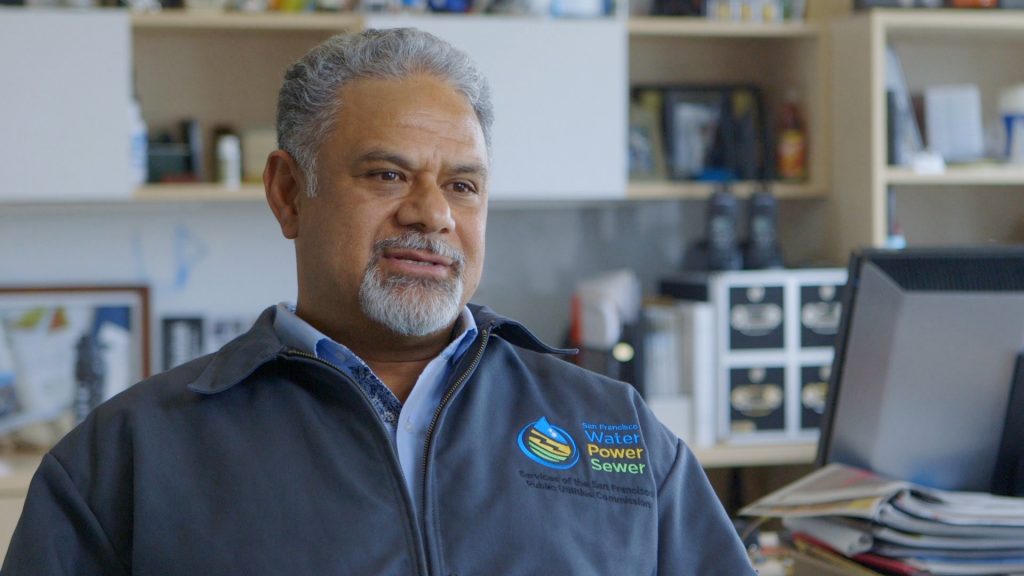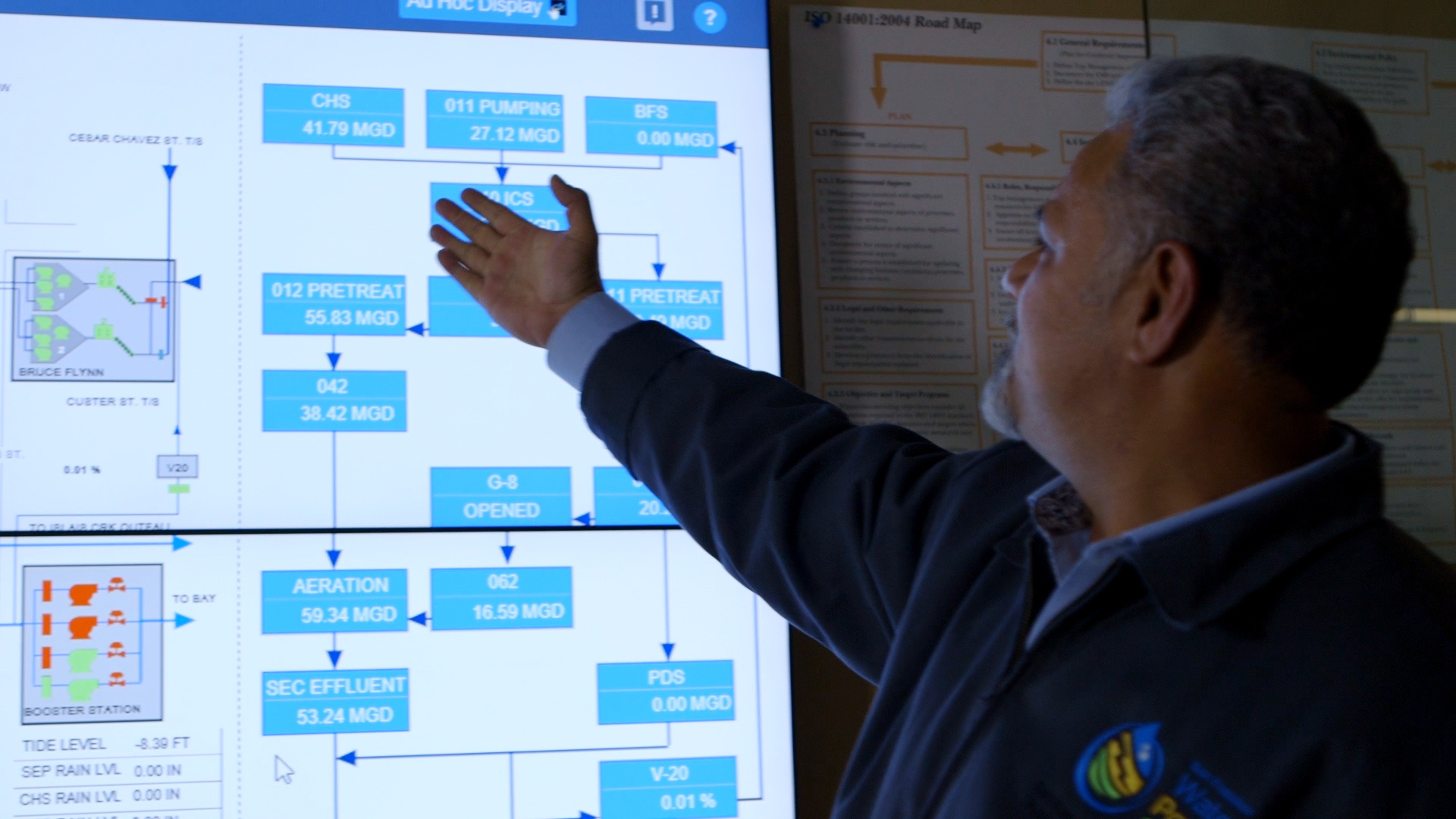
How the cloud can help San Francisco Public Utilities Commission weather the drought
Up here in Seattle, it can be easy to take water for granted. But just a short flight south, the state of California is in the midst of a record drought.
The shortage has prompted the state’s governor, Jerry Brown, to tell agencies such as the San Francisco Public Utilities Commission, to lower their water usage by 25 percent.
“That’s a significant hit for a lot of agencies, including ours,” says Tommy T. Moala, assistant general manager for the agency that provides water, power, and sewer services for about 2.6 million people around the Bay Area. “Well, how do you manage that? How do you track the usage when you have one person living in one house, and you’re going by the households, or what if there’s six people living in the next house? So are you allowing for the 600 gallons per person? And how do you use that data, and how do you even track that?”
To answer those questions and fairly provide water to its customers, the agency needs data, Moala says.
The San Francisco Bay Area-based software company OSIsoft, a global provider of smart sensor platforms that has among its customers more than 1,000 of the world’s leading power utilities and companies, is working with Moala’s agency to make sure water gets to customers in the most efficient way possible – and to make the most of what they have.
“More people are moving into California. The population’s not going down. The average person uses 100 gallons of water a day. In San Francisco, we’re down somewhere around approximately 40 gallons per person,” Moala says. “So we’ve done most all of the conservation that we can. Now, we have to look at other resources. There’s no new dams going up. We need to manage the resources that we have. The longer the drought lasts, it’s going to change how we do business. Right now, it costs $1,000 for the delivery of an acre of water from the Sierras. Recycled water is about ten times as much. Now, if the drought continues, we’ll have no choice but to do recycled water. We might have to do desalination. It just opens the door to different types of treatment to be able to provide water.”
For Moala’s agency, having instant access to information leads to faster decisions, such as being able to move water around their system, reduce the amount of overflows and treat higher quality water.
“We run four treatment plants throughout the city. If they have the right information, we can make better decisions. So if we know where exactly it’s going to rain the heaviest, we can take advantage of our system,” Moala says. “Some of them only come on during a storm, and they treat a significant amount. One, in particular, treats 150 million gallons a day. There’s no staffing there. It only comes on during wet weather. So the question is, when do you staff it? In the past, we’d put people out there and there was no rain. So you’ve just put four people out there to run a treatment plant that’s not going to come online, because the rain either didn’t materialize or wasn’t large enough for a storm. If we had better data that we could do a much better job staffing. We want to be real time and spend the money responsibly, whether it’s for labor, parts, or what have you. Just in staffing alone, it’ll save us a lot of money.”
This is where OSIsoft helps out agencies like Moala’s, by building real-time infrastructure for managing critical information.
“The PI System is a real-time infrastructure. So what that means is basically bringing real-time data from sensors and equipment up to a level where an engineer or a business user can drive insight out of it,” says Ronan de Hooge, a cloud computing architect for OSIsoft. “What that typically comes down to is there’s a set of storage systems or analytic systems, but the real important part is that it’s in real time. It makes the operational data accessible to business users at a higher level.”
The OSIsoft technology also provides a reliable record-keeping system for its customers, so that if something goes wrong, they’re able to find out what happened and when it happened to trace back the root cause. And because their system lives in the cloud, it keeps critical infrastructure away from dangerous pieces of equipment and scales it over multiple locations and multiple data centers, which saves businesses the cost of building structures to house all that data.

OSIsoft has been able to speed up its work through the Microsoft cloud.
“The scale of that data is in terabytes. It’s something that we really can’t do ourselves,” de Hooge says. “We need Microsoft to really come in and provide solutions and join our data with other data sources available within the cloud. Azure Machine Learning gives them a way to use industry-standard and off-the-shelf algorithms to really analyze that data using Azure streaming analytics, where you can take those operational insights and actually bring them into the real-time domain.”
He says that customers will use such information to find patterns that they can apply to build alarm triggers.
San Francisco has a combined sewer system with sewage and storm water going to one pipe that goes to the four treatment plants. On any given day, those treat about 80 million gallons. But a storm could boost that dramatically to 600 million gallons within 35 minutes. Better data for Moala’s agency means knowing what resources they can use, combined with weather patterns, which can lead to moving water around without overflowing.
“Technology is critical in our business. We are data driven. We want to know what exactly is coming into our treatment plants and what exactly is coming out,” Moala says. “We monitor it down to the billionth part, because we really want to leave the place better than we found it. We want to leave our treatment plants better. We want to leave our bay and ocean cleaner.”
For Moala, the cloud will save his agency the cost of servers, hardware and software so that he can focus on giving people what they depend on every day: water.
“The consumer expects every single day, at any given moment, they can turn on the faucet and water’s going to come out,” Moala says. “They expect to take a shower every single day. They might have to take a shorter shower, because that is their reality. They expect the services that we provide to be there 24/7. They expect to pay the lowest rate available for that precious water. It may be a lot more difficult with the resources becoming scarcer in the future, for us, to deliver those services, but it is a reality that we have to deal with.”
Tommy T. Moala, assistant general manager, San Francisco Public Utilities Commission















